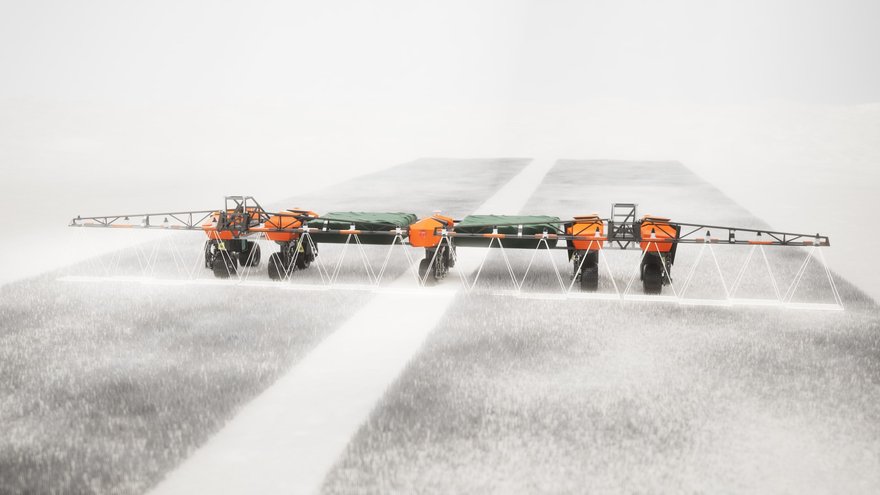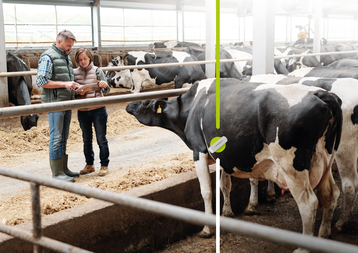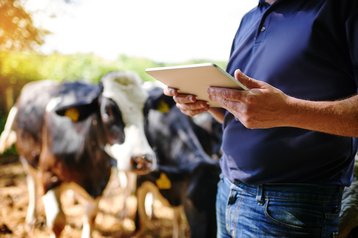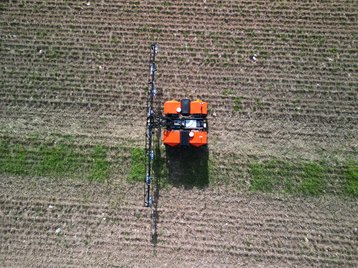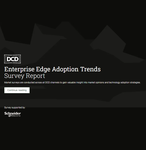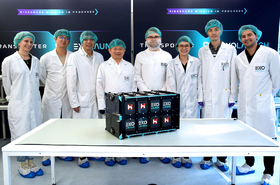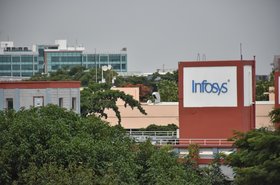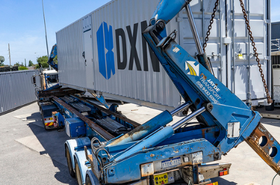Cows may soon be smarter than you.
That is, they will be more like a smart device. Cow monitoring company SmaXtec has developed a way to put a small processor inside dairy cows.
This, it claims, can identify health issues before the cow’s own anatomy has acknowledged it using a combination of onboard sensors and artificial intelligence.
“This technology goes back beyond ten years of experience,” explained Stefan Scherer, CEO of SmaXtec, whose background is in physics and computer science, not dairy farming. “Originally, it was just a research project.”
As they researched, Scherer (along with co-founder Stefan Rosenkranz) realized that the data being collected could enable a more sustainable approach to dairy farming, and solve some of the impending problems facing the industry.
A ravenous planet
Much like the data center industry, the world of farming is not at the forefront of many minds. However, while the two sectors could not be more opposite – the great outdoors versus the virtual world – the rise of AgriTech has brought them together.
Demand is a little easier to predict in the agricultural sector than the data center industry. The need for food production is directly related to population growth - more people equals more hungry mouths to feed and, with a fundamentally limited set of resources, using what we have as sustainably as possible is essential.
Population growth has accelerated in the last century. In 1800m there were an estimated 0.9 billion people on the planet, but by 1900 that figure had reached 1.65 billion. Today, it’s estimated that number is closer to 8.1 billion.
Growth is now expected to slow, but the United Nations predicts that Earth’s population will reach 11.2 billion people by 2100.
The Food and Agriculture Organization currently estimates that by 2050 we will need to produce around 60 percent more food to feed the population, but using our current techniques and methods - dramatically over-spraying crops, over-medicating livestock, and pillaging all nutrients from the soil - the toll on the planet would be too severe.
As a result, the next big farming revolution needs to happen, leaving behind the industrial revelations of tractors and mechanized farming and entering that of the technological and digital - all of which are reliant on data centers in some form.
“SmaXtec is basically dedicated to making the dairy industry sustainable for the future,” claimed Scherer.
By “digitizing” livestock and using artificial intelligence (AI) in the cloud, Scherer said SmaXtec can improve the performance and profitability of a dairy farmer (i.e, get more milk out of each cow), reduce methane or greenhouse gas emissions per liter of produced milk, and improve animal welfare.
The quantified cow
SmaXtec’s solution requires cows to swallow what the company calls a “bolus” - a small device that consists of sensors to measure a cow’s pH and temperature, an accelerometer (which measures acceleration and motion), and a small processor.
“It sits inside the cow and constantly measures very important body health parameters, including temperature, the amount of water intake, the drinking volume, the activity of the animal, and the contraction of the rumen in the dairy cow,” Scherer said. Rumination is a process of regurgitation and re-digestion.
“You could almost envision this as a Fitbit for cows,” he said, adding that by constantly measuring those parameters at a high density - short timeframes with high robustness and high accuracy - SmaXtec can make assessments about potential diseases that are about to break out.
These sensors gather a “tremendous” amount of data that is processed inside the cow on an extremely small and custom-made processor, before being transferred to a base station on the farm via LoRaWAN - a low-power wide area networking protocol.
From the base station, the data is sent to the cloud via a SIM card. All of the artificial intelligence training and inference is done on the cloud - using a time series machine learning algorithm - and farmers can check on the well-being of their cows via a platform on their smartphone.
LoRaWAN is more suited to the task than other methods of connectivity as it is ideal for long-range, low data rates, and low-power applications. According to Scherer, the solution doesn’t need the super-low latency that it could get if the AI was done at the Edge.
“With respect to the urgency of the disease or the progression speed of the disease, it's basically real-time,” he said.
Ultimately, healthier cows produce more milk, and SmaXtec claims to be able to reduce the need for antibiotics at dairy farms by 70 percent. The solution can also reduce methane per liter of milk by around 15 percent - which through the biogenic carbon cycle converts into CO2 after around 12 years.
The company predicts that savings will equal around 800kg of CO2 per cow, per year, based on an average cow in Austria. Scherer notes that the reduction of methane per liter is even more in the US as cows are more productive there.
However, even if the product can live up to its aims, it is still far from the sustainability savings of shifting to milk substitutes such as almonds and oats, which produce a factor of magnitude fewer emissions.
Incentivizing innovation
In the farming industry, there is an overarching push to increase the use of technology in order to improve efficiency in the sector. Cost savings have led this effort, but sustainability is also playing a part.
The US Department of Agriculture (USDA) has an “Agriculture Innovation Agenda,” which aims to help increase US agricultural production by 40 percent” and reduce the “environmental footprint of US agriculture in half by 2050” in part by introducing the use of “cutting edge technologies.”
While an active initiative, there has been little update on progress since 2020 and investment in Public Agricultural Research and Development has fallen by a third in the past two decades. According to research published by the USDA Economic Research Service, “the United States is falling behind other major countries.”
These advancements aren’t limited to the US, but the nation has been one of the biggest backers of AgriTech globally. At COP26, the US teamed up with the UAE to invest $4bn into AgriTech, doubling that figure in the following year as part of a shared Agriculture Innovation Mission for Climate.
By 2025, the two nations plan to invest $8bn in nanotechnologies, biotechnologies, robotics, and AI, said Tom Vilsack, US Secretary of Agriculture at AIM’s First Ministerial Meeting in Dubai in 2022.
The UK has also launched several Environmental Land Management Schemes, including a 2021 program that allows farmers to be rewarded for farming in a more environmentally friendly and sustainable way. While this incentive was not necessarily directly linked to the technological takeover of the farming sector, the end result is still to the benefit of the planet.
As in every industry, there is a certain hesitation and reluctance to welcome high-tech solutions with open arms. Some of that can be put down to fear of change, but often the main concern centers around technology taking jobs away from people.
“We always get asked this question,” sighed Sarra Mander, CMO of farming robotics business Small Robot Company. “But in arable farms, to some extent, that shift already happened when tractors replaced horses. So it's not about that, really. What it would help with is work-life balance for the farmers who are there.”
This is the argument that often gets made: AI won’t take over, it will only supplement. In some instances, this has proved true, but in many others it has led to job losses, and a reduction in quality.
The robots take over
Small Robot Company is known for its Tom robot (presumably named after the company’s CTO, Tom Walters). Tom - the robot - distantly recalls memories of Doctor Who’s dog K9.
The device wheels itself up and down fields, capturing images and mapping out the land. The data is then taken from Tom’s SSD and uploaded to the cloud, where an AI identifies the different plants and weeds, and provides a customized fertilizer and herbicide plan for the crops.
“Essentially, we are reimagining farming with robotics and artificial intelligence, to farm at a more precise level, what we call per-plant farming, giving each plant what it needs, with no waste,” explained Mander.
In the case of Tom, it won’t replace a farmer as someone will still need to head out onto the land to distribute the chemicals, but will reduce the amount of chemicals needed, and enable them to only be applied where necessary.
The chemicals themselves are expensive, so there is a financial incentive to stop wasting what Mander claimed is currently about 90 percent. The chemicals are also bad for the environment. Particularly when synthetically made, it can damage the environment both in the process of creating the fertilizer and herbicide in the first place, and then through damage to the soil, thus reducing long-term productivity.
As is, the amount of data gathered by Tom can be staggering. The device has eight cameras continually snapping images and, in the future, this could be layered with other kinds of sensor data, creating terabytes of data.
“One field we did in the early trials, I think that was something like 13 million wheat plants and half a million weeds,” Mander said. “So the permutations of keeping that amount of data on every single farm and every single field that you're scanning multiple times in a season very quickly rack up the costs if you're keeping that all in a data center.”
This is a common motivating factor for shifting AI processing to the cloud, which can easily scale. However, there is the potential for Small Robot Co to do some AI inference at the Edge, and thus remove even more of the human element of the process.
On-board processing
The company is currently engaging in early trials where processing will be conducted on the robot itself, enabling the immediate removal of the weeds as it crosses them.
“The proof of concept with the weeding robot took the field scale maps that we get using the survey bots and then being able to use Edge AI and take the robot to a specific point in the field and then target individual weeds,” explained CTO Walters - aka the human Tom.
“The single camera on the robot is able to know where, within its field of view, there are weeds that can then be zapped using the ‘weed zapping arm,’” Walters said. “That was done using an Edge object detection model, running on Nvidia cores onboard the robot, to do the very fine grain last centimeter geolocation of weeds.”
The need to do the processing actually on the robot itself, instead of at an Edge deployment on site, comes from the issue of connectivity (or lack thereof).
“The issue we have is that we want to provide services to farms at scale, and so it makes sense to be doing as much processing as fast as possible. To turn things around quickly, there’s a huge amount of data that we have to get back from the fields to the data center and then to the cloud for processing. But we are doing this in the middle of nowhere, and there isn’t always the connectivity,” said Walters.
As a result, it makes more sense to do as much of the processing on the robots as possible, as this enables a much faster turnaround of services. But, as Walters pointed out, that data is a real asset, and keeping it long-term could enable the company to use that data to train new models, and provide new insights.
“We have all these nice sets of data with multiple variances, and it would be great to be able to go back to the raw data and see new things, train new models, and add new capabilities,” he said.
The financial side of life
All of the hurdles ultimately come down to money, and the reluctance (or the inability) to spend it.
Farmers could invest in on-site Edge data centers built for AI applications, but the CapEx requirements involved may make this unlikely. Even when using the cloud, the costs ramp up as the data sets grow and more storage and processing power are needed.
Broadband instability in rural locations is not an issue that can be solved by one farmer’s bank account. That requires government spending.
Investment into telecoms and Internet infrastructure is currently focused around highly-populated areas such as cities or major towns, not the quiet hamlets or mountaintop settlements. And certainly not in farms where there may only be a handful of people for miles.
Acknowledging the importance of 5G, the US government’s National Telecommunications and Information Administration said that 5G “will be a primary driver of our Nation’s prosperity and security in the 21st Century.”
However, actually getting full coverage of the US is much harder in practice. And while moves are being made with satellite-provided 5G, this is still at a relatively early stage. Despite these financial hurdles, there remains hope for the US farming sector and for the AgriTech companies, that their solutions will help to increase food production while reducing carbon emissions.
The US Farm Bill was due to expire by September 2023, but was granted a year-long extension “to make sure we do it right,” opening the floor up for discussion.
May 2023 saw a subcommittee hearing for rural broadband, while November 2023 saw a full committee hearing for ‘Innovation in American Agriculture: Leveraging Technology and Artificial Intelligence.’
“American Agriculture has always been at the forefront of innovation, and artificial intelligence has the potential to revolutionize the way we grow, harvest, and distribute our crops,” Senator Debbie Stabenow said during the November hearing.
“In this rapidly evolving landscape it is imperative that we strike a balance between harnessing the benefits that AI offers, while addressing the concerns such as data privacy, workforce implications, and equitable access to technological innovations.”
Stabenow then confessed that the statement had been written by an AI, to illustrate its power and potential.
She added, in words either written by herself or an aide: “This just shows us how real this technology and its implications can be. It is opening new pathways to address the climate crisis, increase production, lower input costs, and automate planting and harvesting.
“Tractors that scan for weeds and apply targeted herbicides, harvesting machines that use AI to determine ripeness in real-time and autonomously pick crops, and systems that integrate satellite and soil data to more efficiently apply fertilizer are not in the realm of science fiction. These technologies are being put to use on farms across the country today."

